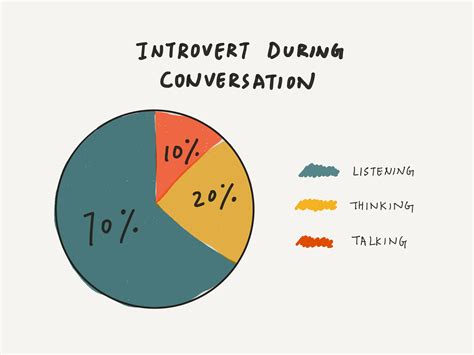
A passenger on an Istanbul-bound flight experienced a bizarre and unsettling incident when the passenger in front of her apparently used the tray table to mix and apply a hair dye treatment mid-flight, causing a strong chemical odor to permeate the cabin and prompting concern among other travelers.
A woman identified only as Theresa, flying on a Corendon Airlines flight from Pristina, Kosovo, to Istanbul, Turkey, was shocked to witness the passenger ahead of her meticulously preparing and applying hair dye on the shared tray table. The incident, captured in a now-viral TikTok video, has sparked outrage and amusement online, raising questions about inflight etiquette and potential health hazards. “I thought I was tripping,” Theresa stated in her TikTok video describing the incident.
Theresa, speaking to Newsflare, recounted the unfolding events. Initially thinking she was seeing things, Theresa observed the passenger meticulously mixing a dark-colored hair dye directly on the tray table. The woman then proceeded to apply the dye to her hair, seemingly unfazed by the confined space and the proximity of other passengers. The pungent chemical odor quickly filled the surrounding area, causing discomfort and raising concerns about potential allergic reactions or respiratory irritation.
The video, which has garnered millions of views, shows the woman meticulously applying the dye to her hair while seated in her airplane seat. In the video, Theresa can be heard exclaiming her disbelief and questioning the woman’s actions. Social media users have responded with a mix of humor and outrage, with many questioning the woman’s audacity and the potential health risks involved.
Corendon Airlines has yet to release an official statement regarding the incident. However, the incident has ignited a debate about airline regulations and the responsibilities of flight attendants in addressing such situations. Many are questioning why the crew did not intervene, while others are discussing the lack of clear guidelines regarding personal grooming activities on board aircraft.
The incident serves as a reminder of the importance of respecting shared spaces and considering the well-being of others, particularly in the confined environment of an airplane cabin. While personal grooming is a common practice during travel, the use of potentially hazardous chemicals in such close proximity to other passengers raises significant concerns. The incident highlights the need for greater awareness and clearer guidelines regarding appropriate behavior on flights.
The incident on the Corendon Airlines flight is not unique to the realm of bizarre travel experiences. In recent years, numerous incidents of unruly passengers and questionable behavior on flights have been documented, prompting airlines to re-evaluate their policies and training procedures. From disruptive passengers engaging in verbal altercations to individuals attempting to open emergency exits mid-flight, the challenges faced by airline staff are constantly evolving.
The rise of social media has further amplified these incidents, allowing them to quickly gain widespread attention and fuel public debate. Videos of unruly passengers and questionable behavior often go viral, generating outrage and prompting calls for stricter regulations and enforcement. The incident on the Istanbul-bound flight is just the latest example of how social media can bring attention to issues of passenger behavior and highlight the challenges faced by airlines in maintaining order and ensuring the comfort and safety of all travelers.
While the Corendon Airlines incident may seem like an isolated case, it raises broader questions about the future of air travel and the need for greater awareness and respect among passengers. As air travel becomes increasingly accessible and the number of passengers continues to grow, it is essential that airlines and travelers work together to create a more comfortable and respectful environment for all. This requires clear guidelines, effective communication, and a willingness to address inappropriate behavior promptly and decisively. The incident involving the hair dye mishap serves as a cautionary tale, highlighting the importance of considering the impact of one’s actions on others and the need for greater awareness and responsibility when traveling in shared spaces.
In-Depth Analysis:
The Corendon Airlines hair dye incident highlights several important aspects of modern air travel, including passenger etiquette, airline regulations, and the role of social media in shaping public perception.
Passenger Etiquette:
The incident underscores the importance of respecting shared spaces and considering the well-being of others, particularly in the confined environment of an airplane cabin. While personal grooming is a common practice during travel, the use of potentially hazardous chemicals in such close proximity to other passengers raises significant concerns. The passenger’s decision to mix and apply hair dye on the tray table demonstrated a lack of consideration for the potential impact on other passengers. The strong chemical odor, potential for allergic reactions, and overall disruption caused by the activity created an uncomfortable and potentially hazardous environment for those seated nearby.
Airline Regulations:
The incident has ignited a debate about airline regulations and the responsibilities of flight attendants in addressing such situations. Many are questioning why the crew did not intervene, while others are discussing the lack of clear guidelines regarding personal grooming activities on board aircraft. While airlines typically have regulations regarding prohibited items and disruptive behavior, specific guidelines regarding personal grooming practices are often less defined. This ambiguity can create challenges for flight attendants in addressing situations like the hair dye incident, where the activity may not be explicitly prohibited but still causes discomfort and potential health concerns for other passengers. The incident highlights the need for airlines to review and clarify their policies regarding personal grooming practices and to provide flight attendants with clear guidelines on how to address such situations.
Social Media Impact:
The incident on the Corendon Airlines flight gained widespread attention due to the viral nature of social media. The TikTok video captured by Theresa quickly spread across the internet, generating millions of views and sparking a mix of humor and outrage among social media users. The rapid dissemination of the video amplified the incident and put pressure on Corendon Airlines to address the situation. Social media has become a powerful tool for holding airlines and passengers accountable for their actions. Incidents of unruly passengers and questionable behavior are often captured on camera and shared online, allowing the public to weigh in and demand action. The Corendon Airlines hair dye incident serves as a reminder of the importance of being mindful of one’s actions in public spaces and the potential consequences of those actions being captured and shared online.
Broader Context:
The incident on the Corendon Airlines flight is not unique to the realm of bizarre travel experiences. In recent years, numerous incidents of unruly passengers and questionable behavior on flights have been documented, prompting airlines to re-evaluate their policies and training procedures. From disruptive passengers engaging in verbal altercations to individuals attempting to open emergency exits mid-flight, the challenges faced by airline staff are constantly evolving. Factors contributing to this trend include increased passenger volumes, heightened stress levels associated with air travel, and the anonymity afforded by social media. Airlines are increasingly relying on technology and enhanced training to address these challenges. In addition to implementing stricter security measures and enforcing stricter penalties for unruly behavior, airlines are also investing in de-escalation training for flight attendants and utilizing data analytics to identify and prevent potential incidents.
Potential Health Hazards of Hair Dye:
The use of hair dye in an enclosed space like an airplane cabin raises legitimate health concerns. Hair dyes contain a variety of chemicals, some of which can be irritating or even toxic. These chemicals can be inhaled, absorbed through the skin, or ingested, potentially leading to a range of adverse reactions.
Common chemicals found in hair dyes include:
- Ammonia: Used to open the hair cuticle, allowing the dye to penetrate. Ammonia can irritate the respiratory system, causing coughing, wheezing, and shortness of breath.
- Hydrogen Peroxide: Used as a bleaching agent and to develop the color. Hydrogen peroxide can irritate the skin and eyes.
- Paraphenylenediamine (PPD): A common dye ingredient that can cause allergic reactions in some people. Symptoms of PPD allergy can range from mild skin irritation to severe swelling and difficulty breathing.
- Resorcinol: Another dye ingredient that can disrupt hormone function and cause skin irritation.
In an enclosed space like an airplane cabin, the concentration of these chemicals can be higher, increasing the risk of adverse reactions. People with asthma, allergies, or other respiratory conditions may be particularly vulnerable to the effects of hair dye fumes. The strong odor of hair dye can also be unpleasant and cause nausea or headaches in some individuals.
The Role of Flight Attendants:
Flight attendants are responsible for ensuring the safety and comfort of passengers on board aircraft. This includes addressing passenger complaints, resolving conflicts, and enforcing airline regulations. In the case of the Corendon Airlines hair dye incident, many have questioned why the flight attendants did not intervene. There are several possible explanations for their inaction:
- Lack of Clear Guidelines: As mentioned earlier, airlines often lack specific guidelines regarding personal grooming practices. This can make it difficult for flight attendants to determine whether an activity is prohibited or not.
- Fear of Confrontation: Flight attendants may be hesitant to confront passengers, particularly if they are unsure of the airline’s policy or if they fear escalating the situation.
- Competing Priorities: Flight attendants have numerous responsibilities during a flight, including safety checks, meal service, and assisting passengers with disabilities. They may not have had the time or resources to address the hair dye incident.
Regardless of the reason for their inaction, the incident highlights the need for airlines to provide flight attendants with clear guidelines and training on how to handle similar situations in the future. This includes educating flight attendants about the potential health hazards of hair dye and empowering them to intervene when passenger behavior is causing discomfort or potential harm to others.
Legal Considerations:
While there may not be specific laws prohibiting the use of hair dye on airplanes, passengers who engage in such behavior may be subject to legal consequences if their actions cause harm to others. For example, if a passenger suffers an allergic reaction to hair dye fumes and can prove that the person using the dye was negligent, they may be able to sue for damages. Airlines also have the right to refuse service to passengers who violate their rules or engage in disruptive behavior. In some cases, passengers may even be arrested and charged with criminal offenses, such as disorderly conduct or assault.
The Future of Air Travel:
The Corendon Airlines hair dye incident serves as a cautionary tale, highlighting the importance of considering the impact of one’s actions on others and the need for greater awareness and responsibility when traveling in shared spaces. As air travel becomes increasingly accessible and the number of passengers continues to grow, it is essential that airlines and travelers work together to create a more comfortable and respectful environment for all. This requires clear guidelines, effective communication, and a willingness to address inappropriate behavior promptly and decisively.
In the future, airlines may need to consider implementing stricter regulations regarding personal grooming practices and providing passengers with more information about the potential health hazards of certain products. Passengers, in turn, need to be more mindful of their behavior and considerate of the needs of others. By working together, airlines and passengers can create a more positive and enjoyable travel experience for everyone.
The incident also prompts reflection on the evolving social contract in public spaces. As societies become more diverse and interconnected, the potential for conflicting expectations and values increases. Clear communication, empathy, and a willingness to compromise are essential for navigating these challenges and ensuring that public spaces remain safe and comfortable for all. The hair dye incident, while seemingly trivial, underscores the importance of these principles and serves as a reminder that even seemingly minor actions can have a significant impact on others.
The Power of Viral Content:
The incident further highlights the power of viral content in shaping public discourse and influencing corporate behavior. The rapid spread of Theresa’s TikTok video put pressure on Corendon Airlines to respond to the situation and address the concerns raised by social media users. In today’s digital age, airlines and other businesses must be prepared to respond quickly and effectively to negative publicity generated by viral content. This requires having a robust social media presence, monitoring online conversations, and being willing to engage with customers and address their concerns. The Corendon Airlines hair dye incident serves as a reminder that even seemingly isolated incidents can quickly escalate into public relations crises if they are not handled properly.
Preventative Measures and Solutions:
Several preventative measures and solutions could be implemented to reduce the likelihood of similar incidents occurring in the future:
- Clearer Airline Policies: Airlines should develop and clearly communicate policies regarding personal grooming practices on board aircraft. These policies should address the use of potentially hazardous chemicals, the impact on other passengers, and the potential for disruption.
- Enhanced Flight Attendant Training: Flight attendants should receive enhanced training on how to handle situations involving inappropriate passenger behavior, including the use of potentially hazardous products. This training should include de-escalation techniques, communication skills, and knowledge of airline policies and procedures.
- Pre-Flight Announcements: Airlines could include pre-flight announcements reminding passengers to be considerate of others and to refrain from using products that may cause discomfort or health concerns.
- Designated Grooming Areas: Some airlines may consider creating designated grooming areas on board aircraft, where passengers can engage in personal grooming activities without disturbing other passengers.
- Product Restrictions: Airlines could restrict the use of certain products on board aircraft, such as hair dye, strong perfumes, and other items that may cause allergic reactions or respiratory irritation.
- Passenger Education: Airlines could educate passengers about appropriate behavior on flights through online resources, brochures, and other materials.
- Increased Surveillance: Airlines could increase surveillance of passenger behavior, using cameras and other technologies to identify and address potential problems.
- Stronger Penalties: Airlines could impose stronger penalties for passengers who violate airline policies or engage in disruptive behavior. This could include fines, bans from future flights, and even legal action.
By implementing these measures, airlines can create a more comfortable and respectful environment for all passengers and reduce the likelihood of similar incidents occurring in the future. The Corendon Airlines hair dye incident serves as a valuable lesson, highlighting the importance of proactive measures and a commitment to ensuring the well-being of all travelers.
FAQ:
Q1: What exactly happened on the Corendon Airlines flight?
A1: A passenger on a Corendon Airlines flight from Pristina, Kosovo, to Istanbul, Turkey, was observed by another passenger, Theresa, mixing and applying hair dye on the tray table in front of her mid-flight. This caused a strong chemical odor and concern among nearby passengers.
Q2: Why is this incident considered problematic?
A2: The incident is problematic because the use of hair dye in an enclosed space like an airplane cabin can cause discomfort and potential health hazards for other passengers due to the strong chemical odors and potential allergic reactions. It also raises questions about passenger etiquette and airline regulations regarding personal grooming on flights.
Q3: Did the flight attendants intervene in this situation?
A3: According to reports, the flight attendants did not intervene. This has raised questions about why the crew did not address the situation, and whether there is a lack of clear guidelines regarding personal grooming activities on board aircraft.
Q4: What has been the response to this incident on social media?
A4: The incident, captured in a now-viral TikTok video, has sparked outrage and amusement online. Many social media users have questioned the woman’s audacity and the potential health risks involved, while others have expressed disbelief.
Q5: What are the potential health hazards of using hair dye in an enclosed space?
A5: Hair dyes contain chemicals like ammonia, hydrogen peroxide, and paraphenylenediamine (PPD) that can cause respiratory irritation, skin allergies, and other adverse reactions, especially in an enclosed space like an airplane cabin where the concentration of these chemicals can be higher. People with asthma, allergies, or other respiratory conditions may be particularly vulnerable.









